Investing in an LMS is not an everyday affair. Based on the platform your organization selects, licensing an LMS can cost from anywhere between $3,500/year/100 learners to $10,000/year/100 learners. Hence, it is natural for an organization to expect a reasonable ROI. And, the only way to measure this ROI is by setting clear expectations. In this case—goals that you expect to achieve by implementing an LMS.
On this Page
There are two types of LMS goals
-
Pre-purchase LMS Goals
- Getting the right price
- Getting all the features
- Good customer service
-
Post-purchase LMS Goals
- Increasing an employee’s ability to perform at their job
- Creating an environment of learning and development
- Bringing down costs and increasing profitability
- Pioneering innovation
- Increased engagement rates
- Nurturing a professional staff force
- Centralizing training standards
In this article, we discuss the post-purchase goals of an LMS, why should we set them, and how it benefits an organization.
What Goals Should Your New LMS Accomplish?
Enabling Employees to Perform Their Jobs
The primary purpose of an LMS is to enable employees to perform at their job. Hence, when setting up the LMS with courses, learners, admins, and learning paths, it is important to ensure that the LMS directly contributes towards improving a specific job function. This should be your first goal.
Setting up improvement goals on an LMS
- Ensure your learners, courses, departments, and line managers are all in sync with each other.
- The learning path feature of your LMS ensures courses are started and completed on time. Hence, it’s a great feature to leverage when setting performance improvement goals.
- Assessments play an important role as well. They directly indicate if a person is periodically improving. The LMS’s inbuilt assessment engine once again helps with this.
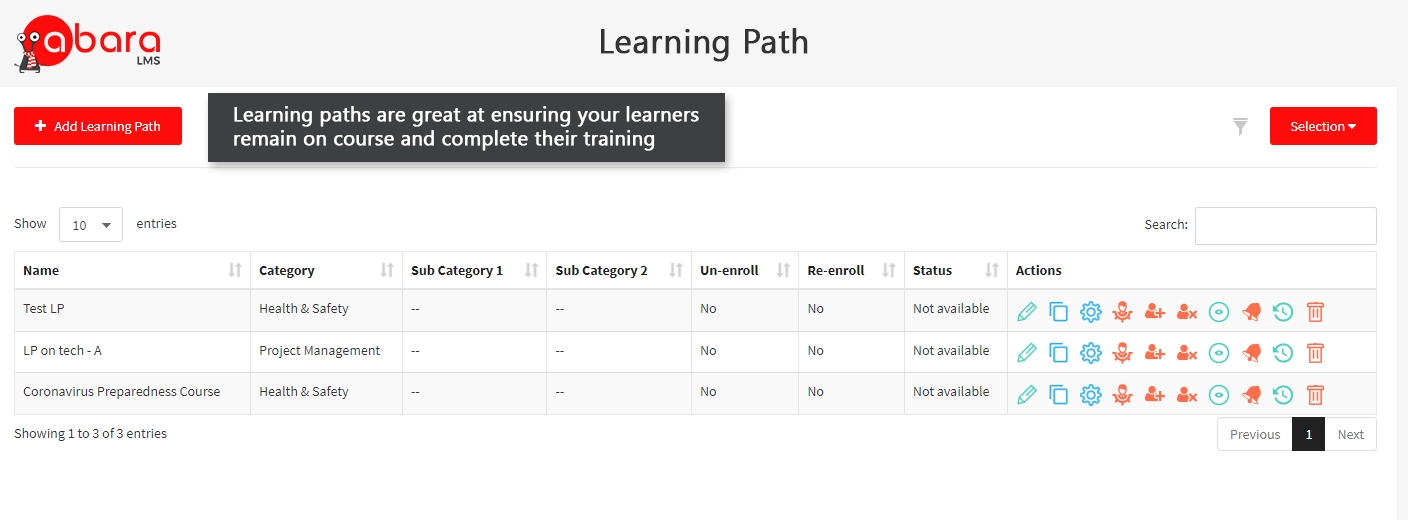
Creating an Environment of Learning and Development
Improving at a job function is accelerated when an environment of learning and development flourishes. Ensure your learners are interested in learning and pursuing self-development at their own will. Making ‘learning culture’ a critical goal to achieve via your learning management system.
How to promote an environment of learning and development?
- Keep renewing and adding to your existing learning material.
- Link incentives, promotions, increased responsibilities, and stronger appraisals to learning.
- Make training accessible, your LMS will help achieve this.
- Select an LMS with social learning feature, where learners freely share and discuss topics, it is great way to encourage learning.
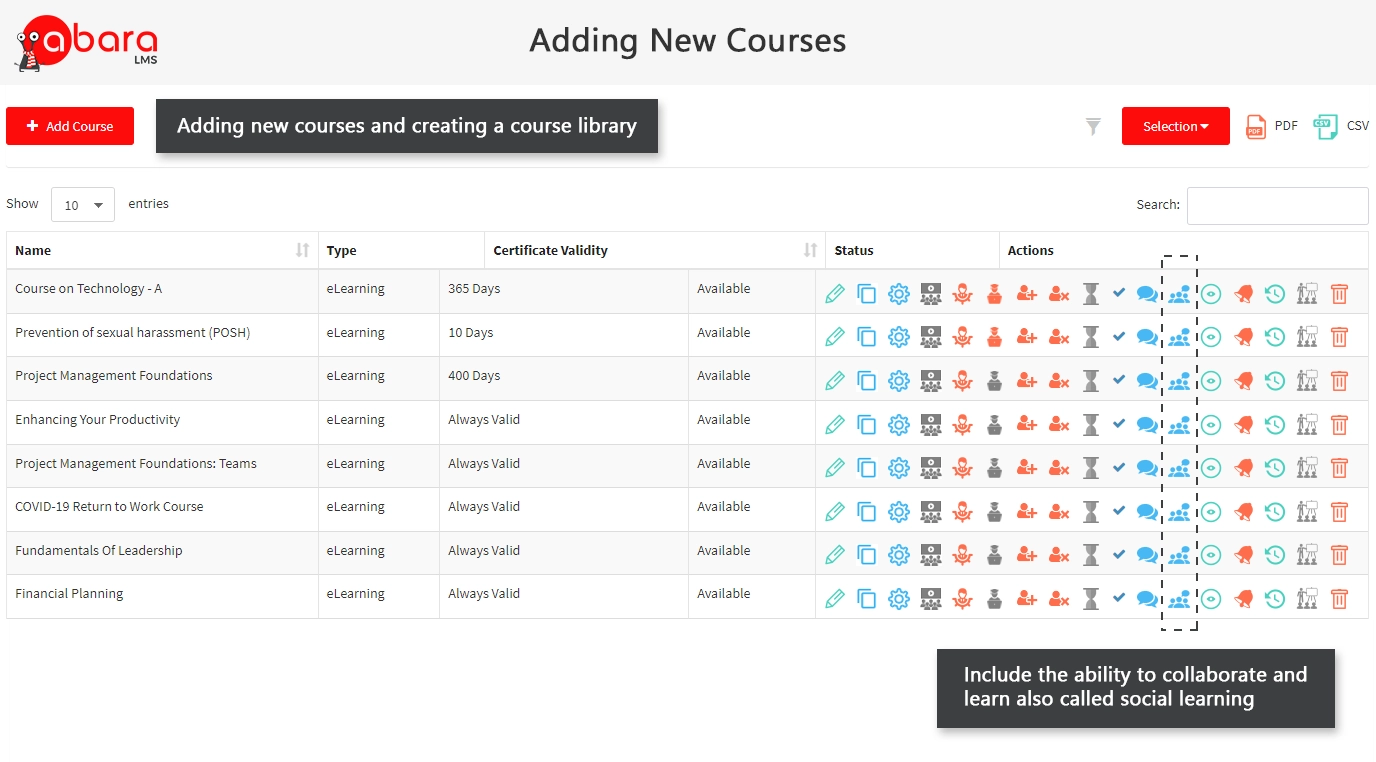
Improving Organization-Wide Efficiency
The LMS is best known as a tool that improves employee efficiency which in return boosts organization-wide efficiency. A survey carried out by iSpring Suite revealed:
- 40% of the respondents noted increase in revenue
- 53% respondents noted increase in productivity
- 26% respondents noted reduction in costs
- 16% respondents noted decrease in employee turnover
As noted, many organizations today benefit from the increase in efficiency via training and development using an LMS. As a result, increasing efficiency is another goal to set for your LMS.
Testing improved organization-wide efficiency
- Compare your organization’s pre LMS indices with post LMS indices: study your company’s pre-LMS installation metrics against those of post-LMS installation. Look at metrics that define a company’s progress over time such as revenue, attrition rates, productivity, and customer satisfacti0n.
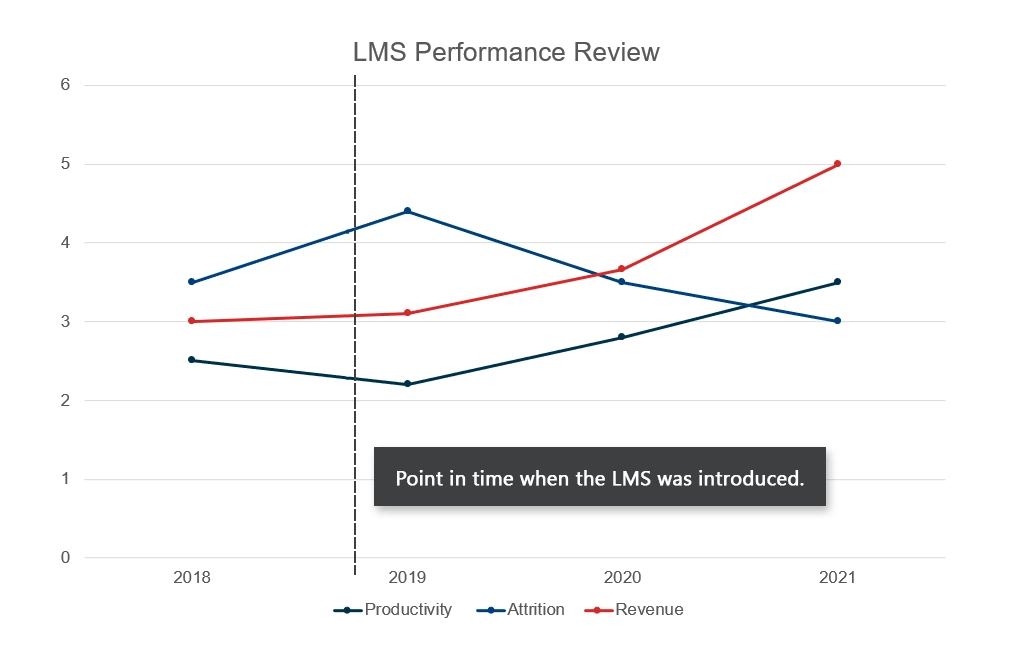
Pioneering Innovation and Resourcefulness
The LMS is an excellent tool to store and distribute updated information. Since access to updated information is a kick-starter to innovation and new ideas, a well maintained LMS with updated information kindles your employee’s ability to innovate and improve at processes. A goal to set when implementing an LMS is to ensure a boost in creativity and innovation by utilizing the LMS to its fullest.
Another goal is increasing resourcefulness. The LMS is a capable storage platform with the ability to deliver content remotely. Making it a very handy platform for employees to access products manuals, datasheets, product updates, pricing and more on a daily basis. Also, the ability to find a solution by referring to existing documents on an LMS is a skill in resourcefulness that every employee must develop.
How to ensure innovation and resourcefulness is something your LMS promotes
- Ensure the content stored on the LMS is engaging and renewed periodically.
- Load all manuals, data sheets, and process documents on the LMS for central access.
- Ensure the LMS is easily accessible.
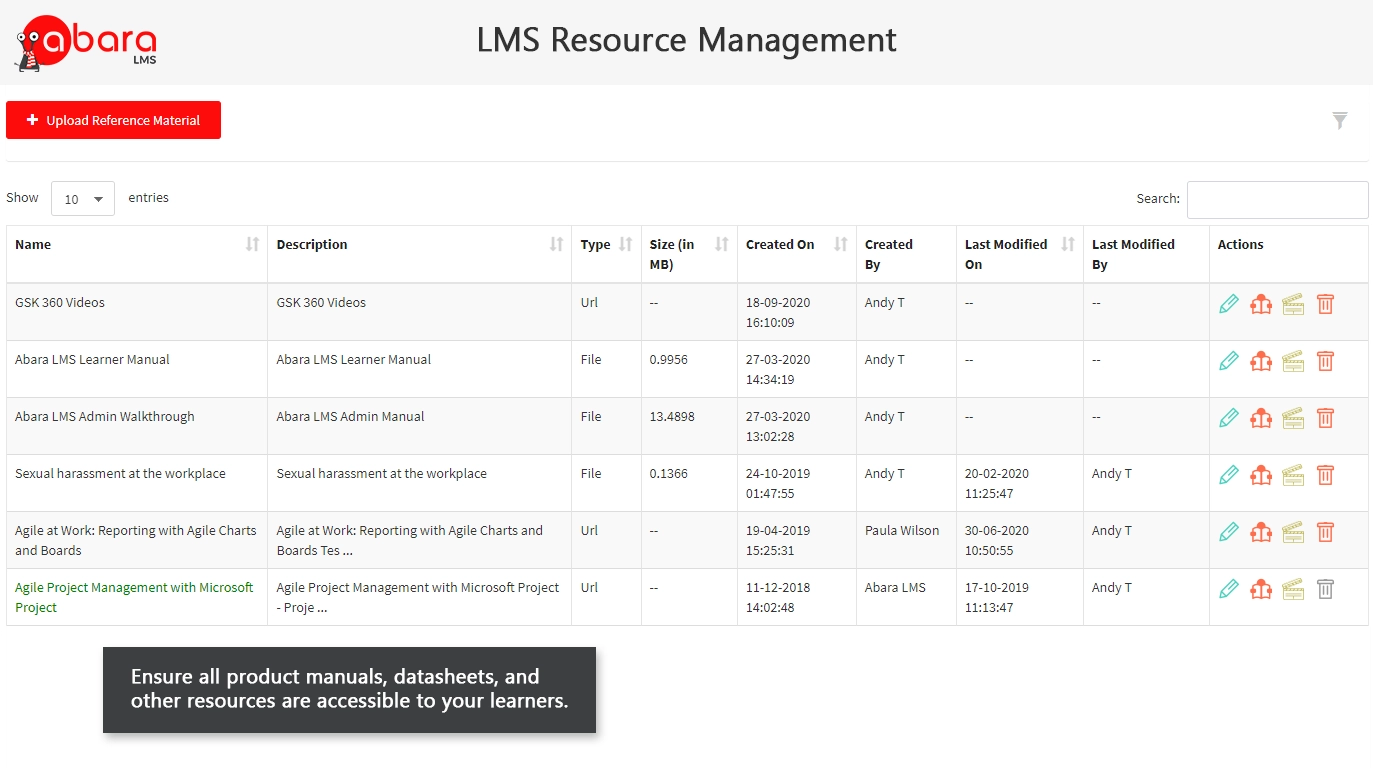
Increased Engagement Rates
According to Gallup, the world-wide employee engagement rate is at an all-time low of 13%. This is a worrying number. However, if you look at eLearning, one of its original intentions is to increase employee engagement rates. The LMS through its ability to make training accessible, host engaging eLearning, and quickly assess learners, is a perfect tool to boost engagement levels.
Many employees consider their organization to be indifferent towards their personal goals and growth. Loading the LMS with content aimed at increasing an employee’s worth both inside the organization and outside—in the job market—helps engage learners at a more personal level. Making engagement another goal that your LMS must achieve.
Tips on increasing engagement levels using an LMS
- Load the LMS with content intended to develop an employee’s work skills.
- Ensure content is highly relevant to their needs.
- Give them an opportunity to learn on your LMS, apply learning to their present job, and succeed via internal promotions or increased responsibilities.

Nurturing a Professional Workforce
The time stood English proverb, “learning makes a man fit company for himself as well as for others” is definitely true. The same stands true for an organization and its employees. As a result, training turns employees into professionals, and professional employees are a strong match for their colleagues as well as the organization and its customers.
To clarify, we do not mean training on how to act professional. Rather, we mean training on improving an employee’s core abilities. Employees well versed with their job functions automatically come across as professionals. Why? Because their knowledge on the subject matter gives them the confidence of a well-versed, seasoned professional.
How to groom your staff?
- Load LMS with expert level courses on a subject.
- Some content can be grooming and mannerism focused as well.
- Assessments via the LMS’s assessment engine
- Scenario based training
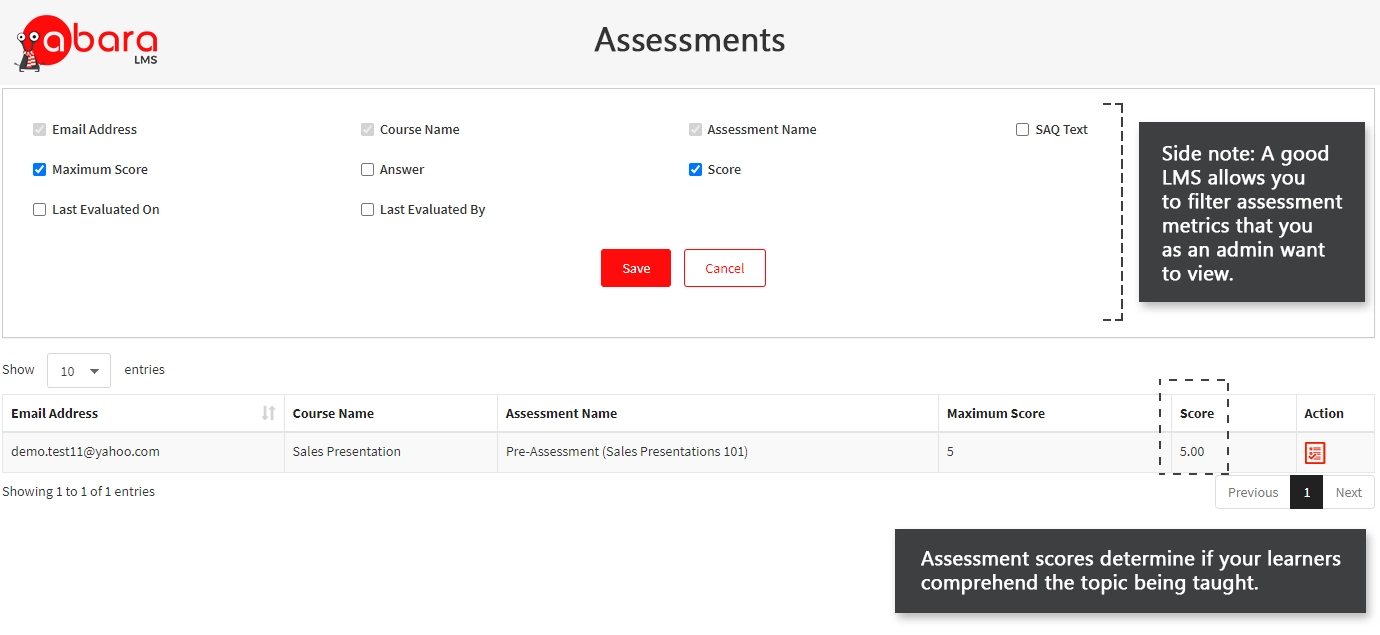
Centralizing Training Standards
Finally, the last goal your LMS should help achieve is centralizing training and its standards. Centralizing training standards allow for a formal training structure to cement itself firmly in an organization, overthrowing ad-hoc training activities that yield inconsistent results, moreover make tracking difficult.
The final goal of achieving centralized training status is an administrator and an L&D-based goal.
How to centralize training efforts using an LMS
- Store all training content centrally.
- Ensure all training communications are carried via the LMS.
- Training schedules, trainers, venues, and all other training related activities must be handled via the LMS.
- Store training records, reports, and progress rates for analysis on the LMS.
- Slowly transfer all traditional training activities to modern training activities on the LMS.
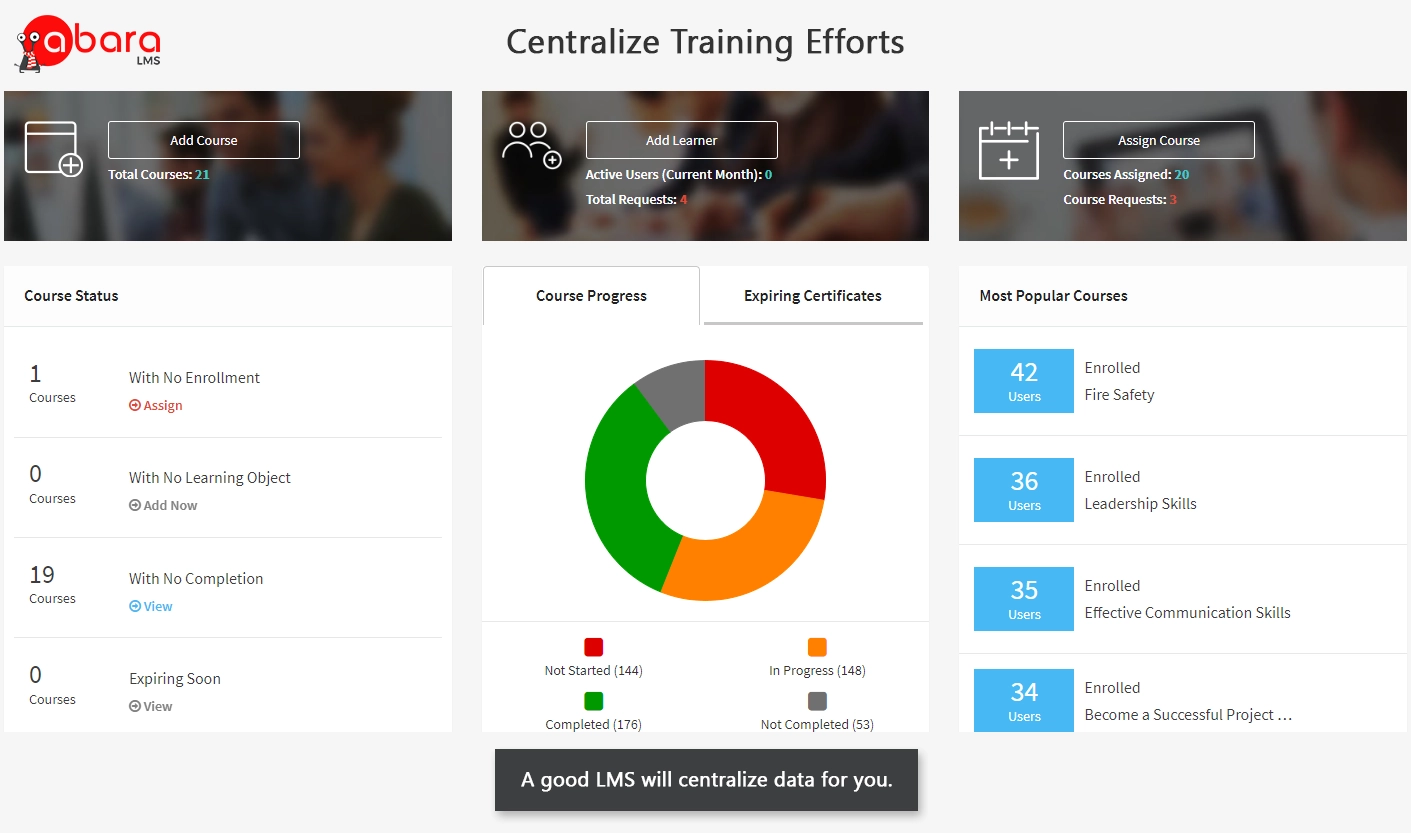
Conclusion
As an investment, the learning management system does not come cheap. Hence, it is only right for the LMS to succeed on all fronts. Moreover, in order to ensure your LMS’ success, defining achievable goals and tracking their outcomes are very important.
At Abara, our LMS is built to ensure an organization’s success. Furthermore, we have successfully built into Abara multiple features aimed at targeting an organization’s development index and move its needle positively. As a result, we have bagged over 12 titles by prominent third-party reviewers and SaaS comparing platforms to whom we have no ties whatsoever, you can view why Abara is the Best in Segment LMS here.
If you’re interested in testing our LMS to know why it’s considered as on the best there is, click here m. Moreover, get in touch with us at contact@abaralms.com or reach out to us by filling this short form for us to get back to you! And, for custom eLearning courses, reach out to us at eNyota Learning.
Happy Learning!

